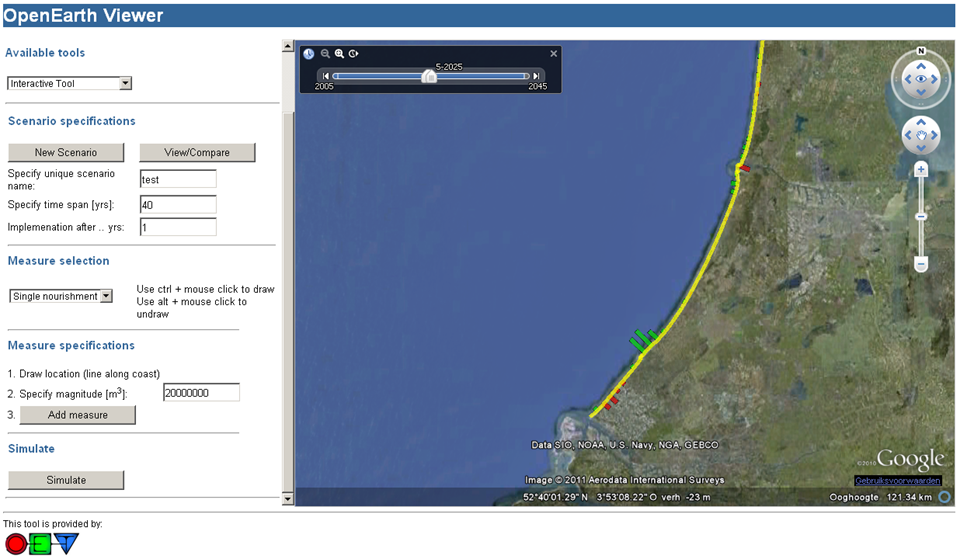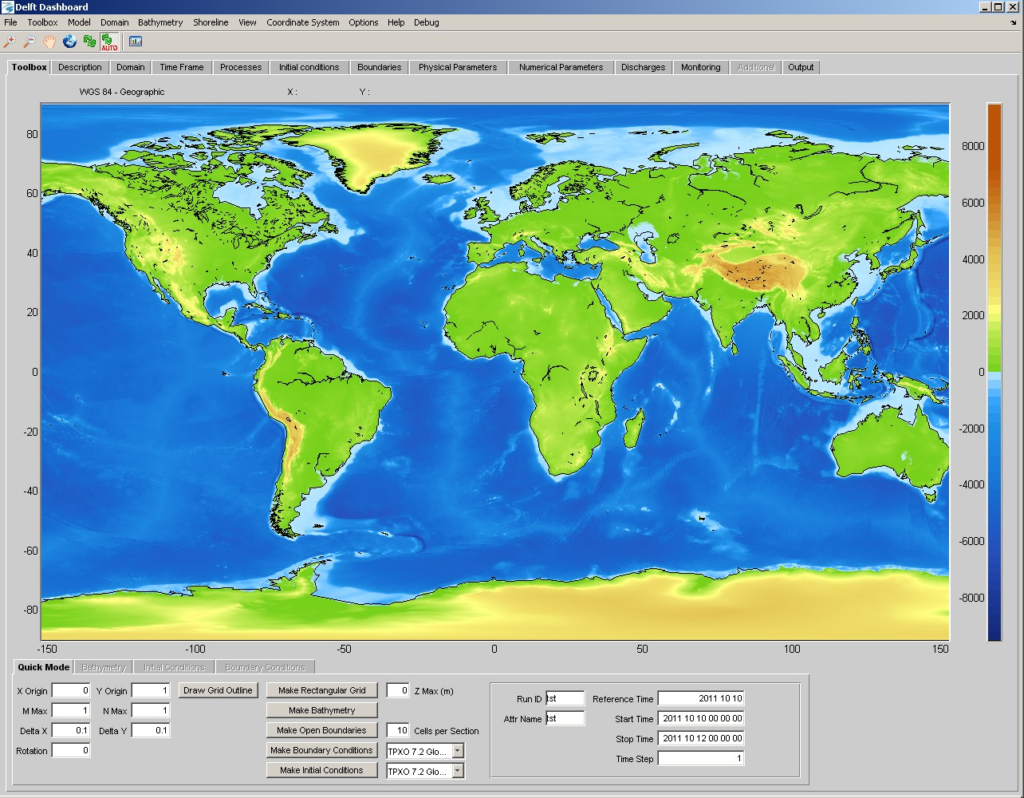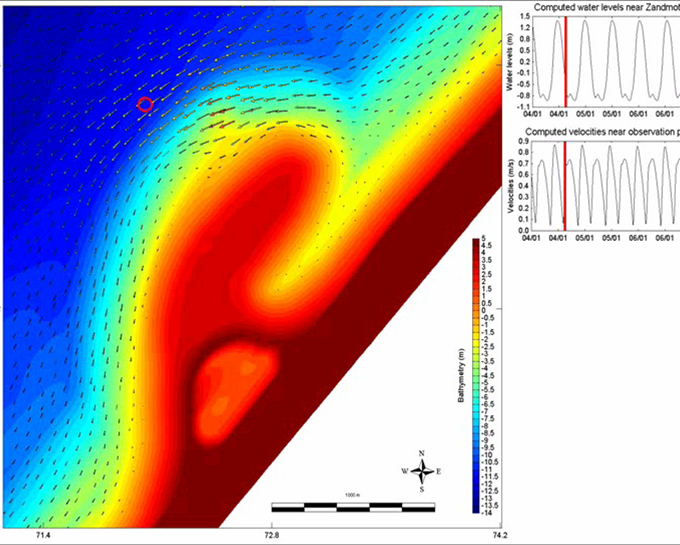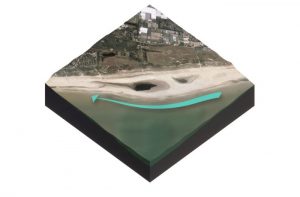How to use
To determine the feasibility and design of a concentrated nourishment for coastal development, guidance is presented below. First, the feasibility of a concentrated nourishment for coastal development is assessed using a rule-of-thumb method. Subsequently, a preliminary design of the concentrated nourishment is determined using simple (interactive design) tools including parameterization. For appropriate detailing and a geometric design more advanced tools (like process-based models) are available to be applied.
This building solution is mainly applicable in the initiation and planning and design phase.

Guidelines for feasibility and designing tools for concentrated nourishments
To be able to determine the feasibility of a concentrated nourishment for coastal development the following systematic approach is recommended.
Step 1: Project Initiation
Step 2: Analyse present situation
Step 3: Assess impact of desired intervention
Step 4: First order designing (conceptual)
Step 5: Appropriate detailing
Step 6: Construction and monitoring
Step 1: Project initiation
In the initiation phase of the project the next items need to be considered
- determine the need for nourishment
- determine the goal of the nourishment: safety, nature, recreation, or other, or a combination
- determine possible locations of the concentrated nourishment; the location does not have to be the optimal location from coastal management perspective, but can be a location which balances well all other considerations
- determine the timing of the nourishment in the year: the period of constructing the nourishment should be carefully chosen with respect to breeding season of species (seals, birds, etc.) and nursery habitats of fish and shrimps
Step 2: Analyse present situation
- determine the characteristics of the area such as hydrodynamics, wind, waves, sediment characteristics (grain size, bed composition, cross-shore profile shape), ecology, annual sediment transports, morpho-dynamics, etc.
- make inventory of stakeholders within project related area
Step 3: Asses impact of desired intervention
To assess the impact of the intervention and to investigate whether impacts are acceptable or desirable, or that certain impacts need to be mended, it is advised to:
- assess the temporal impact of the desired intervention to its surrounding environment; involve experts (like consultants and knowledge institutes) to predict and evaluate the short and long term impact. Besides the standard design aspects it is suggested to consider the BwN design aspects listed in the table below:
| Standard design aspects | Extra BwN design aspects |
|---|---|
| Hydrodynamic climate | Sustainability |
| Annual transports | Dune development |
| Profile shape | Habitat development |
| Sand composition | Recreation |
| Sand losses | Groundwater |
| Protection structures | Diversity in ecological conditions |
| Recurrence interval | Local burial of benthic species |
| Costs | Indirect impact on foreshore as proxy for juvenile fish |
| Functionality |
- In this step the typical design parameters can be varied, such as the nourishment volume, alongshore length, nourishment frequency, and for some case sediment grain size. If the intervention is very different from previous measures, predictive shoreline modelling is required. The same holds for a first nourishment along an unstudied coast.
Step 4: First order designing (conceptual)
A first design step is to optimize the location of the concentrated nourishment w.r.t. goal, long-term strategies, stakeholder involvement. For this purpose a design tool has been developed
This interactive design tool can be used for 1D shoreline modelling for long-term coastal evolution (up to ~50 yrs). It includes development of coastlines and a parameterized development of dunes and habitat factors related to the coastline dynamics. Interventions can be soft (nourishments), hard (e.g. groynes) or a combination of the two. Multiple interventions can be evaluated (including interaction). The design variables for nourishments are locations, volumes, and frequency. After a scenario, a scorecard is generated including all kind of relevant (temporal) information including costs. Other information can be displayed (bathymetry, topographic data, etc). The Interactive Design Tool – Holland Coast facilitates a user to explore different strategies, climate change scenarios, and optimizing the nourishment location(s). This design tool is a dedicated tool, with an attached calculation module applying the Unibest model.

Step 5: Appropriate detailing
Once the location and general size and contours of the concentrated nourishment have been determined, further detailing of the nourishment and its development over time, has to be made. For this purpose several tools are made available increasing the level of detail and accuracy.
Delft Dashboard is a standalone Matlab based graphical user interface developed by Deltares supporting modellers to quickly set-up new or existing coastal models anywhere in the world. The large number of coupled toolboxes allow for fast and easy model input generation. With Delft Dashboard setting-up a (coastal) model wherever on earth is a matter of minutes, which used to take days or weeks before. Delft Dashboard can be used to rapidly assess the impact of a nourishment on the local hydrodynamics e.g. currents along the coast.

Detailed assessments of the processes around a nourishment can be carried out using the process-based, open source model Delft3D. The state-of-the-art model can combine hydrodynamics (2D or 3D) with waves, sediment transport, morphology, interaction ecology and morphology. Delft3D can be used to study the temporal evolution of the nourishment, sediment losses (long- and cross-shore), operational system for predicting swimming conditions, etc.

It is noted that other well reputed knowledge institutes offer comparable model suites.
Step 6: Construction and Monitoring
When a suitable design has demonstrated to be feasible, a dedicated construction and monitoring program needs to be initiated and maintained, both during and after construction, focusing amongst other on .
- Bathymetry and topography;
- Currents and waves;
- Dune development;
- Coastal Morphodynamics;
- Vegetation, benthos, seals, fish and birds;
- Predicting swimming conditions.

